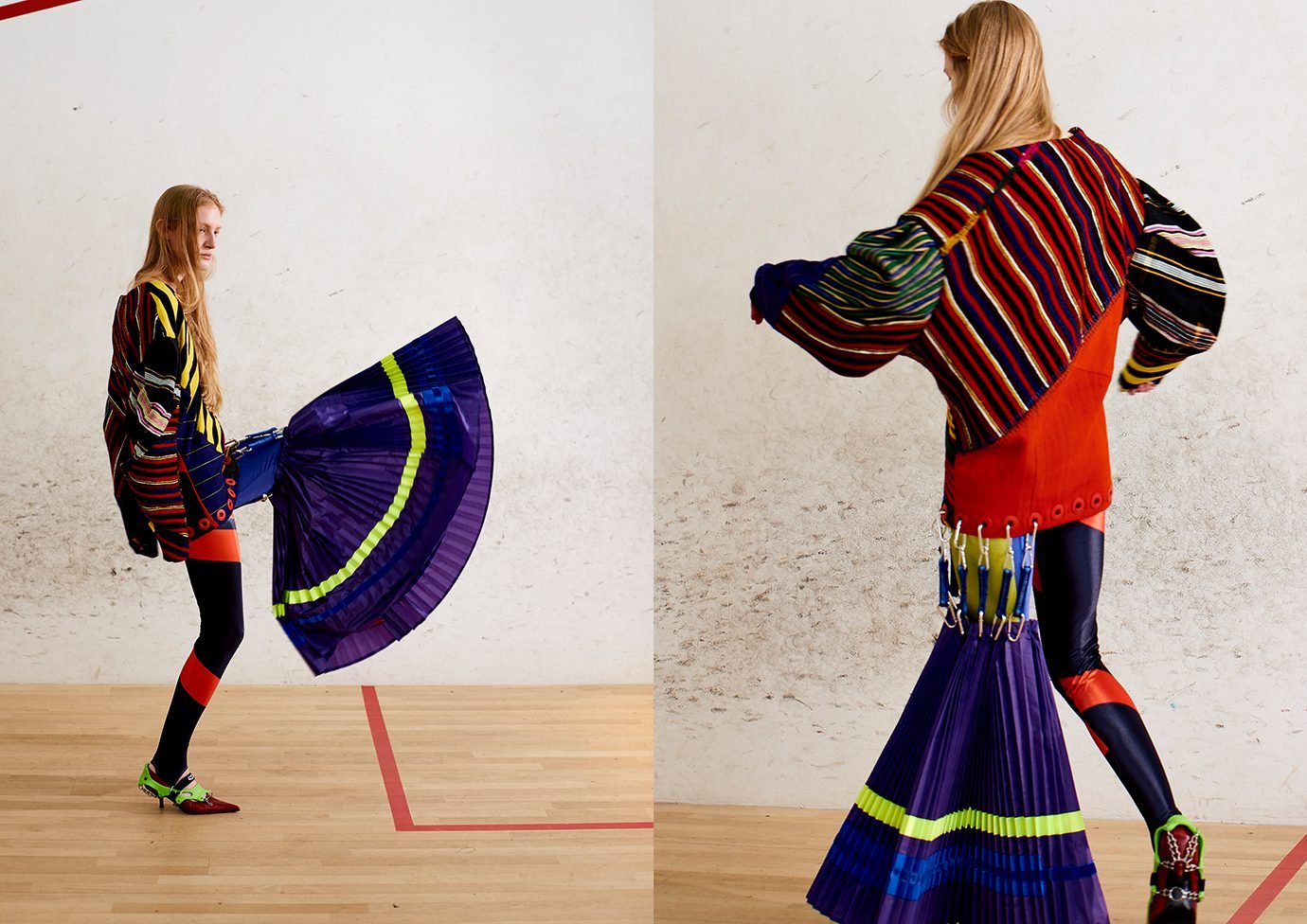Print student Pip mentally traveled to San Francisco in the 70s through the music of Patrick Cowley, the DJ who supplied the beats to queer culture of the time and even soundtracked adult films. This inspired the designer to research vintage gay porn magazines, parts of which he scanned and reworked into prints. “It looks noisy and tie-dye ‒ I wanted to bring the sounds and the psychedelic colours of the time back to life.”
“I wanted to create the perfect combination of historical shapes with a modern silhouette.” – Juntae Kim
Fellow time-traveler Juntae wants to introduce a new fashion genre, combining menswear and womenswear through historical references. Juxtaposing tradition and functionality, the designer found inspiration in historical costumes and artworks from the Rococo and Baroque periods and adapted them to the iconic 501 jeans. “I wanted to create the perfect combination of historical shapes with a modern silhouette.”
Focussing on the future was Charlie. For his pre-collection, the menswear designer started researching adaptability in the context of ever-changing climate conditions. “Instances of extreme weather are becoming more common, even in London,” he explained. “You never know when it will rain.” This translated into a capsule collection where zippers allowed the wearer to transform each piece, changing the volume of the trousers, for example, or exposing shoulders by zipping open the sleeves.




































































